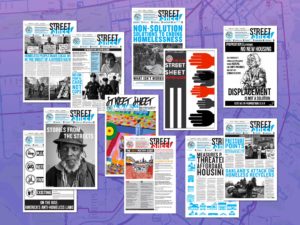by Anisha Tammana
On Tuesday, April 9, Supervisor Hillary Ronen, alongside co-sponsors Shamann Walton and Matt Haney, introduced legislation to shut down San Francisco’s Juvenile Justice Center by the end of 2021. A rally to support the initiative took place on the city hall steps that day, and with speakers ranging from city officials to formerly incarcerated youth, the common message rang clear: we need to take action, and we need to stop imprisoning our kids.
The energy in the crowd remained positive and hopeful, cheering on the young leaders and advocates speaking, and holding signs with phrases like “books not bars” and “free our minds”. With such a popular and emotional cause being discussed, many prominent leaders in the community came out to speak.
Stevon Cook, president of the San Francisco Unified School District, referred to the detention center as “a building that represents bondage”.
“We have to reverse the narrative of what it means to be young and black in San Francisco,” he said.
District Attorney George Gascón spoke as well, his presence clearly controversial. Despite speaking in favor of the proposed legislation, he was still met with jeers and cries of “put killer cops in jail”, referencing his failure to indict cops responsible for the executions of Mario Woods and Luis Góngora Pat .
A particularly notable sponsor of the legislation was Supervisor Walton, who was incarcerated as a teenager in Solano County. By continuing to implement and support juvenile detention centers, he said to the crowd, we are “teaching them [youth] to live institutionalized … There is no way in hell we would ever put a system in place worse than juvenile hall.”
Overwhelmingly, those who attended the rally were young, passionate advocates. Those who could were there to represent themselves and their communities, and to make their voices heard.
“They portrayed me as someone I wasn’t,” said youth advocate Tenaya Jones. Jones was 14 when she was first incarcerated. Now 18, working two jobs, and about to graduate high school, she conveyed a sense of hope to the hundreds of faces looking up at her.
Others attending the rally had a powerful message to send as well.
Lucero Herrera, from the Young Women’s Freedom Center, talked about why she had turned up for the rally. She was charged as an adult when she was young and feels passionately that the most marginalized individuals should be leading the cause. She now runs meetings among girls inside detention centers and remains a passionate advocate.
Hayden A. Beaulieu, with Communities United for Restorative Youth Justice (CURYJ), talked about his personal ties to the issue. He shared the same sentiment as Herrera regarding where answers come from. “Those who are closest to the problem are closest to the solution,” said Beaulieu. In this way, organizations propelled by youth who have been in the system are the most effective and imaginative.
CURYJ runs a program called Homies 4 Justice, a paid internship program that trains Oakland youth in leadership and social action. By emphasizing youth voices, they seek to “end mass incarceration and youth criminalization”.
Pushback against closing Juvenile Hall, from figures such as Juvenile Probation Chief Allen Nance, has included typical rhetoric, spreading the message that the public and convicted youth won’t be safe.
“They are on the wrong side of history,” Supervisor Haney said of opponents to the proposed legislation. With eight supervisors sponsoring the plan, the board now has a veto-proof majority. The legislation comes after a report by the San Francisco Chronicle on reduced crime among youth in California. The legislation specifies a Youth Justice Reinvestment Fund that would use funds previously meant for Juvenile Hall on community-based alternatives as well as mental health and academic resources for youth.
Critics of the Justice Center refer to the system as outdated. In addition to the declining youth crime rate, many sources stating the ineffectiveness of of youth incarceration (researchers at Brown University and Massachusetts Institute of Technology) have been referenced by supervisors as reason for closing down the center. Being imprisoned as a youth increases the chances of adult incarceration.
In the last 10 years, the annual cost of detaining youth has doubled. Supervisors cited statistics relating to mental health issues among detained children – 90% of youth in Juvenile Hall suffer from mental health issues.
Racial justice has long been a common theme in the conversation around incarceration. The overrepresentation of black youth in juvenile halls was another key point brought up by the supervisors backing the legislation. Black children made up 55% of those in Juvenile Hall in 2018 – yet only account for 4.9% of San Franciscans under 18.
Meredith Desautels, a staff attorney at the Youth Law Center has been working closely with the supervisors to develop the legislation. She has partnered with the Young Women’s Freedom Center to support and raise communities impacted by youth incarceration.
Ultimately, it was those who had been in the system that had the loudest voices.
“Our city heard our cry,” said Stevon Cook early in the day. The rallying cry could be heard above everything else.
“Close youth prisons! Build youth leaders!”

